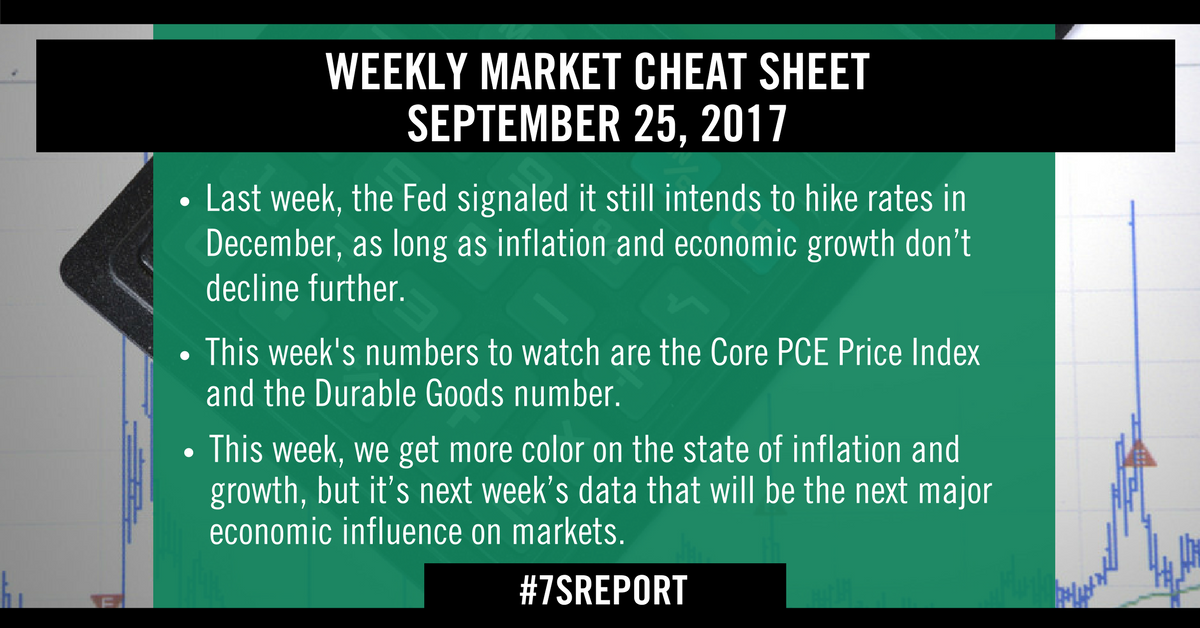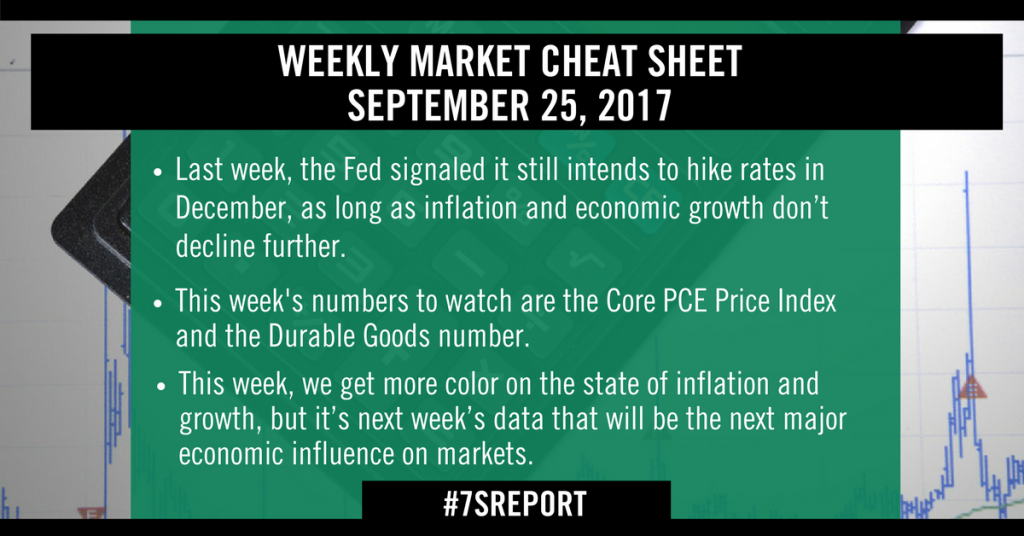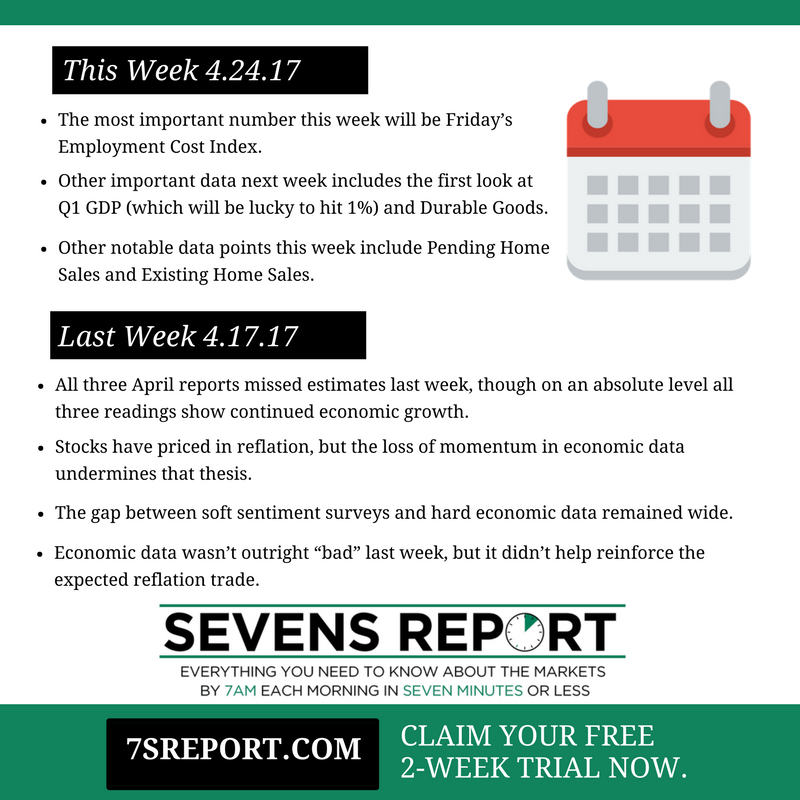Weekly Market Preview, September 25, 2017
Last Week in Review
The most important occurrence last week was that the Fed clearly signaled it still intends to hike rates in December, as long as inflation and economic growth don’t decline further, and that declaration weighed on stocks modestly but boosted reflation-sensitive sectors.
Looking at the Fed meeting, it wasn’t that it was surprisingly hawkish, it wasn’t. In virtually every way, the Fed met consensus expectations. It announced commencement of balance sheet reduction in October, it barely made any changes to the statement (other than referencing the hurricanes), and the “dots” were unchanged for both 2017 (median showing one more hike) and 2018 (median showing three hikes).
Yet as we have cautioned, the market had a somewhat illogically dovish expectation of the Fed, and as such we saw the Fed decision push bond yields and the dollar higher, and weigh modestly on stocks.
Now, that dovish expectation has been corrected, as Fed fund futures are pricing in a 70% chance of a rate hike (which is probably about right at this point).
With the Fed confirming that rates are still moving higher, absent a roll over in inflation or growth data, that puts the onus on economic activity to accelerate and avoid a potentially “stagflationary” outcome, and unfortunately the lone piece of notable data last week wasn’t very good.
The September flash manufacturing PMI met expectations at 53.0 (up from 52.5 in August), but the composite number (manufacturing and services) missed estimates at 54.6 vs. 54.9.
Now, to be fair, these are all still strong readings on an absolute level, but the absolute level isn’t as important as the rate of change. Unfortunately, the rate of change in economic growth is not significantly positive (at least not hard economic data).
That is a potential problem, because if the market is going to accept the Fed is hiking rates in December, then we need economic growth to accelerate and create the economic reflation that will push stocks higher. If that doesn’t happen, we’ve got the Fed hiking into a stagnant growth environment, and that’s not a great scenario for stocks.
This Week’s Preview
In many ways, this week is the relative “calm before the storm” of next week, which will contain the final global September PMIs and the September jobs report.
That said, there are a few important numbers we need to watch, primary of which is Friday’s Personal Income and Outlays Report.
The reason this report is important is because it contains the Core PCE Price Index, the Fed’s preferred measure of inflation. If it shows firming similar to what we saw in the recent CPI report, from a stock standpoint it will put more pressure on Treasury yields and the reflation trade, and from a macro standpoint it will put more pressure on economic growth to accelerate.
Away from the Core PCE Price Index, the next notable number is Durable Goods (Wednesday). Remember, while regional PMIs have been very strong, actual hard economic data has not, and we’ve still got a big discrepancy between surveys and real activity. If durable goods bounces, that will be a good sign that actual economic growth is rising to meet the strong survey data.
Outside of those two reports, the next most important event is the Chinese September PMIs, out Thursday and Friday night. Chinese data has been a touch underwhelming lately, but growth expectations haven’t changed. If they do start to be changed lower that could be a surprise headwind on stocks.
Bottom line, this week we get more color on the state of inflation and growth, but really, it’s next week’s data that will be the next major economic influence on markets.
Time is money. Spend more time making money and less time researching markets every day. Subscribe to the 7sReport.com.










